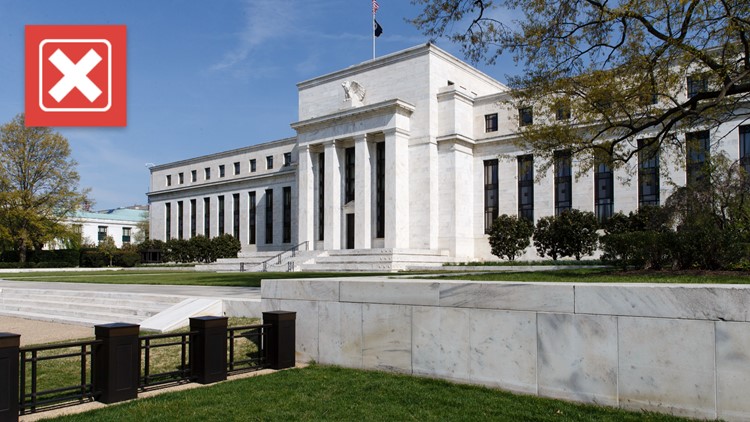The Federal Reserve announced on July 20 that its new instant payment system called FedNow is officially live.
Ahead of its launch, some online posts equated FedNow to a central bank digital currency (CBDC).
Several VERIFY readers, including Wanda, also asked if FedNow creates a CBDC.
THE QUESTION
Does FedNow create a central bank digital currency?
THE SOURCES
- The Federal Reserve
- The Atlantic Council, a nonpartisan U.S. think tank
- Steven Schwarcz, professor of law and business at Duke University School of Law
- Search of U.S. Congressional legislation
THE ANSWER
No, FedNow does not create a central bank digital currency.
WHAT WE FOUND
FedNow is not the same thing as a central bank digital currency (CBDC), nor does it create one.
The Atlantic Council, a nonpartisan U.S. think tank, defines a CBDC as digital money “backed and issued by a central bank.” In the United States, that central bank would be the Federal Reserve.
Existing digital money is backed and issued by commercial banks – not the Fed.
The U.S. does not currently have a CBDC and the Fed has not made any decisions on issuing a digital dollar.
Both the Federal Reserve and Steven Schwarcz, a professor of law and business at Duke University School of Law, say FedNow is not a form of currency. It doesn’t create a CBDC, either, as some people online have claimed.
“Rather, it’s merely an electronic system, run by the Federal Reserve, by which money can be transferred between banks more quickly than under prior systems,” Schwarcz said.
If your financial institution participates in FedNow, you’ll be able to “send and receive instant payments in real time, around the clock, every day of the year,” the Fed says.
If your financial institution participates in FedNow, you’ll be able to “send and receive instant payments in real time, around the clock, every day of the year,” the Fed says.
For example, FedNow allows people to instantly receive their paychecks and use them the same day, according to the Fed. A company could also instantly access funds when an invoice is paid if their bank uses the payment system.
The Fed said on July 20 that 35 “early-adopting” banks and credit unions, along with the U.S. Treasury Department’s Bureau of the Fiscal Service, are set up to use the FedNow payment service. U.S. Bank, JPMorgan Chase, Wells Fargo Bank and BNY Mellon are among the 35 early adopters.
An executive order signed by President Joe Biden in March 2022 tasks the Federal Reserve with looking into how a CBDC might be created, and evaluating necessary steps and requirements for implementing one.
But the Fed has not made a decision on issuing a CBDC, and the nation’s central bank says it would not do so without “clear support from Congress and the executive branch, ideally in the form of a specific authorizing law.”
Congress has not passed a law authorizing the Federal Reserve to issue a CBDC, though some lawmakers have introduced legislation aimed at preventing a digital dollar in the U.S.
Some people on social media have also claimed that a CBDC would replace cash and make paper money “worthless.” But that’s not true, either.



